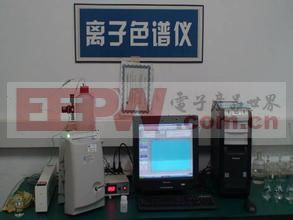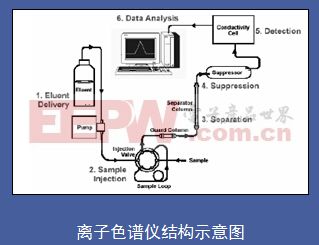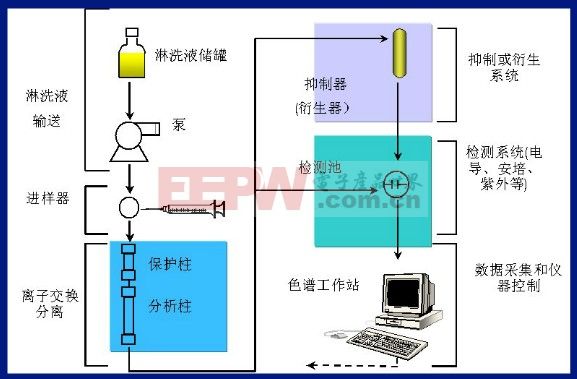1. Principles of Ion Chromatographs - Introduction
Ion chromatography is a type of high-performance liquid chromatography, also known as high-performance ion chromatography (HPIC) or modern ion chromatography. Unlike traditional ion exchange chromatography, it uses resins with a high crosslinking degree and low exchange capacity. This allows for smaller injection volumes and the use of a plunger pump to deliver the eluent, enabling online, automatic, continuous conductivity detection of the eluate.
Ion chromatography can generally be divided into three main types: ion exchange chromatography, ion exclusion chromatography, and ion-pair chromatography.
1) Ion Exchange Chromatography: This method separates ions based on differences in their ionic interactions. It is primarily used for the separation of organic and inorganic anions and cations.
2) Ion Exclusion Chromatography: Based on the Donnan exclusion principle, this technique relies on non-ionic interactions between the solute and the stationary phase. It is mainly used for the separation of weak acids, organic acids, alcohols, aldehydes, amino acids, and sugars.
3) Ion-Pair Chromatography: In this method, the separation is mainly determined by the mobile phase. It is commonly used for the analysis of surface-active anions and cations, as well as metal complexes.

2. Principle of Ion Chromatography - Composition
An ion chromatograph typically consists of several key components that are combined based on the specific analytical requirements. These include the delivery system, injection system, separation system, and detection system. Additional features such as an online degasser, autosampler, suppressor system, post-column reaction system, and fully automated control system can be added depending on the application.
1) Delivery System: Its main function is to maintain a consistent flow rate or pressure while delivering the mobile phase through the system.
2) Injection System: It must be able to withstand high pressure, resist corrosion, and ensure good repeatability and ease of operation.
3) Separation System: The separation mechanism is primarily based on ion exchange, where dissociable ions on the ion exchange resin interact reversibly with solute ions of the same charge in the mobile phase. The difference in affinity between the ions and the exchanger leads to their separation.
4) Detection System: Common detectors include conductivity detectors, ultraviolet-visible detectors, amperometric detectors, and fluorescence detectors. Other advanced technologies like chromatography-mass spectrometry may also be integrated.
a) Suppressor and Conductivity Detector
b) Techniques such as chromatography-mass spectrometry

3. Ion Chromatograph Principle - How It Works
The basic principle of ion chromatography involves the reversible exchange between dissociable ions on the ion exchange resin and solute ions of the same charge in the mobile phase. The difference in affinity of the analyte ions to the exchanger leads to their separation, making it suitable for hydrophilic anions and cations.
The operation of an ion chromatograph begins with the infusion pump delivering the mobile phase at a steady flow rate or pressure. The sample is injected before the column, and the mobile phase carries the sample into the column. As the components move through the column, they separate and reach the detector sequentially. In suppressed ion chromatography, a suppression system is placed before the conductivity detector. A second high-pressure pump delivers the regenerant solution to the suppressor, reducing the background conductivity of the mobile phase. The effluent then enters the conductivity detection cell, and the signal is sent to the data system for recording, processing, or storage. Non-suppressed systems do not include a suppressor or a regenerant pump, resulting in a simpler and more cost-effective setup.

Wood Grain/Wood Texture Melamine Impregnated Paper
melamine impregnated paper,Wood Grain/Wood Texture Melamine impregnated paper,Melamine Paper for mdf
Shandong Yami Import and Export Co., Ltd. , https://www.yamiwood.com